60. FLOWERING DOGWOOD ROW
Cornus florida
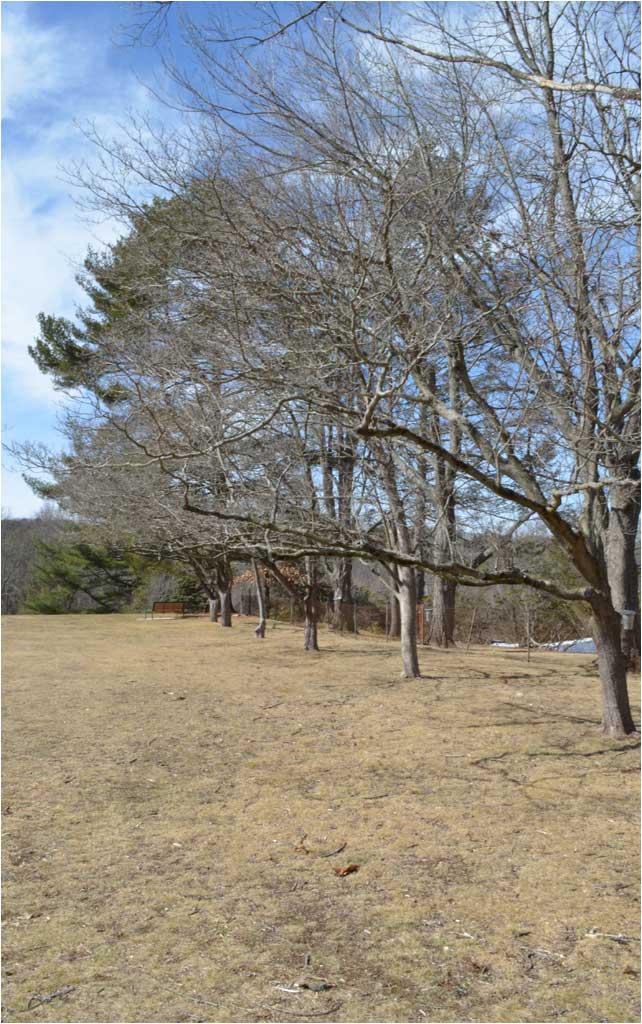
On the northern side of Westmoor Park is a row of native Flowering Dogwood trees that date back to the time of Charles and Leila Hunter, the benefactors of Westmoor Park who lived on the property from 1939 through 1973. The best guess is this Dogwood Row was planted sometime in the 1940s.
WINTER & SPRING, BUDS
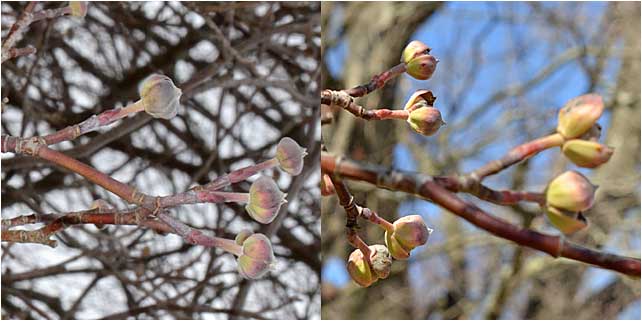
The Dogwood's current flower buds were produced the Summer before, and remain on the trees over Winter (left). In early April the buds break open to flower (right).
SPRING, FLOWERS

The Dogwood Row flowers every year and is a welcome sight in Spring. The showy foliage is composed of a small, inconspicuous flower in the center, and the four petals surrounding the flower are actually a type of leaf called a bract. Their chief job is to attract pollinators.
SPRING, FLOWERS CLOSE-UP
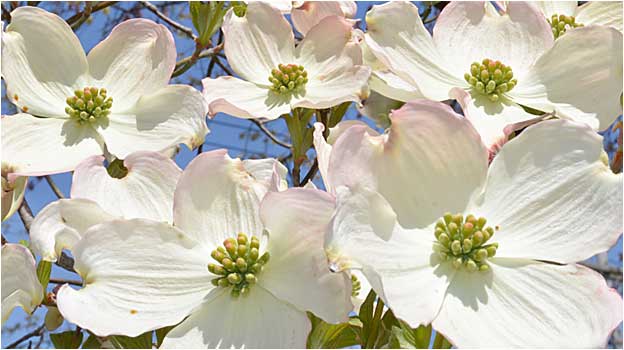
These stunning flowers appear before the leaves in Spring, and the central green area is actually a monecious, perfect flower (Male and Female parts in the same flower). They are capable of self-pollination but in a row planting like this one they are likely cross-pollinated.
SUMMER
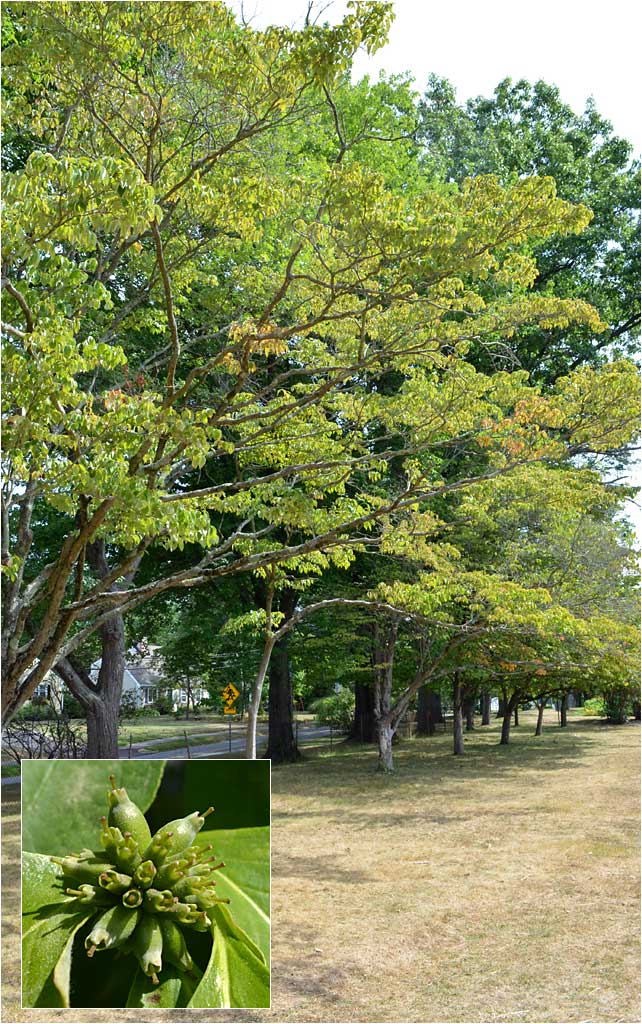
Summer brings attractive foliage for this small (rarely to 25 ft.) tree, and during the summer months the fruit develops from the fertilized flowers (inset).
EARLY FALL
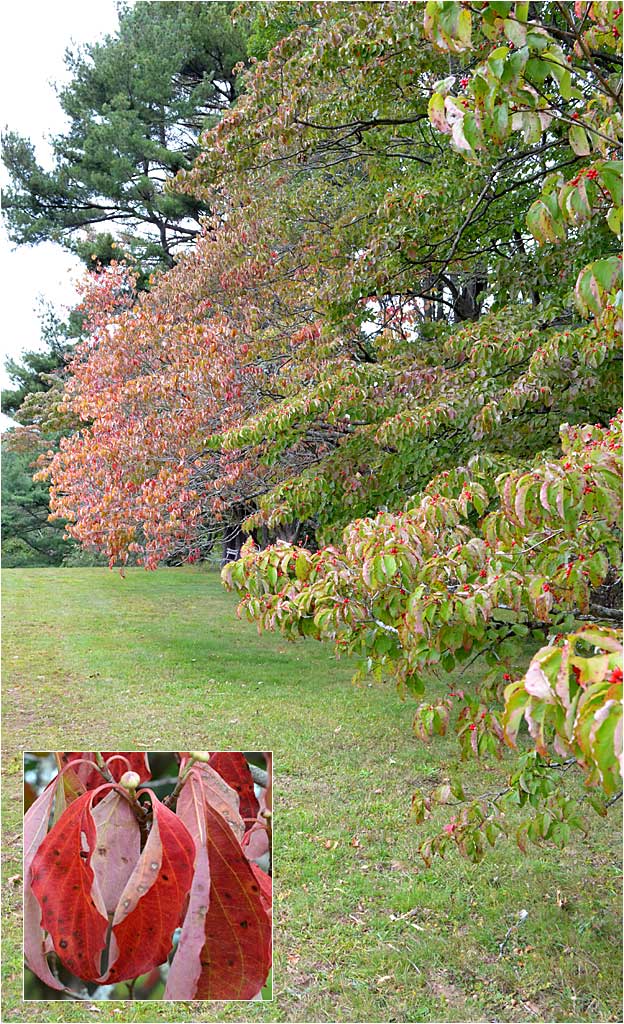
Fall comes early for most Dogwoods, and the leaves turn a deep red toward the end of Fall (inset). Note next year's flower bud is already in place in the inset photo.
FALL
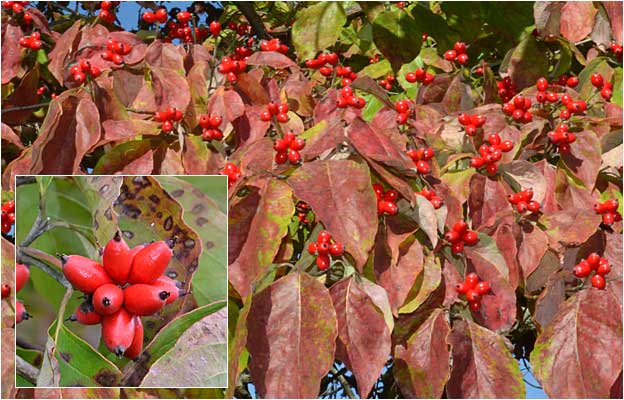
Fall showcases the bright red berries of Flowering Dogwood. Technically, these are called "drupes" because the seeds (1 or 2) are inside the fruit. The drupe is high in calcium and fat. The bright color is a magnet to migrating birds, and squirrels and chipmunks also take their fair share.
BARK

On mature Dogwood trees, the bark is dark gray and broken up into smaller pieces to give it a distinctive look.
LOOKING AHEAD TO NEXT YEAR
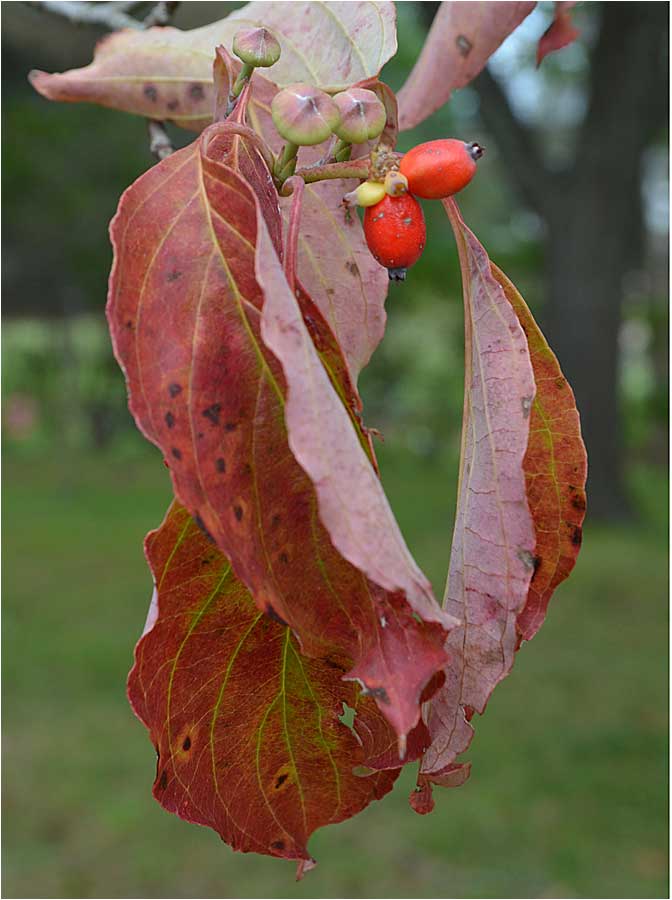
Toward the end of Fall not only does the foliage get a deeper shade of red, the fruit stays around to the delight of all kinds of wildlife, and next year's flower buds finish growing (top). They will remain on the tree over the winter.